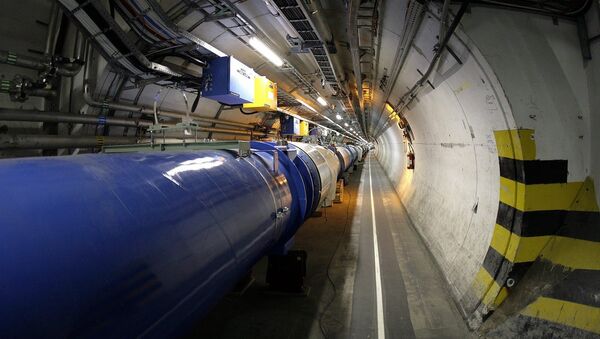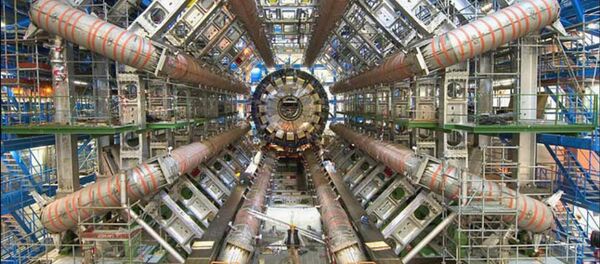The conclusions are the result of a joint analysis of two experiments carried out by the CMS [Compact Muon Solenoid] and LHCb [Large Hadron Collider beauty] collaborations, which examined data they collected from proton-proton collisions at CERN, in 2011 at a center-of-mass energy of seven teraelectronvolts [TeV] and in 2012 at eight TeV.
The data from the experiment revealed a new and extremely rare decay of the Bs particle [a heavy composite particle consisting of a bottom antiquark and a strange quark] into two muons.
This decay had been predicted to occur by theorists about four times out of a billion, an incidence which was observed roughly by the two experiments.
"This is a very rare decay, and it is not easy to come across it. In this case the CMS and LNCb teams carried out experiments independent of each other, and found this decay," explained Victor Savrin, a nuclear physicist at Moscow's Lomonosov University, and member of the CMS team who built and operate the CMS detector on the Large Hadron Collider at CERN.
To find and trace such decay, said Savrin, "takes us to the boundaries of the Standard Model [of physics] and allows us to trace processes, which lie beyond its boundaries."
"Many theories that propose to extend the Standard Model also predict an increase in this Bs decay rate," Joel Butler from the Fermilab particle physics and accelerator laboratory in the US said about the experiment, the results of which were published on Wednesday in the journal Nature.
"This new result allows us to discount or severely limit the parameters of most of these theories. Any viable theory must predict a change small enough to be accommodated by the remaining uncertainty."
The Large Hadron Collider, the world's largest and most powerful particle accelerator, first started up in September 2008, and consists of a 27-kilometre ring of superconducting magnets with a number of accelerating structures to boost the energy of the two high-energy particle beams which travel around the structure at close to the speed of light, before they are made to collide.
Last month the Collider restarted after a hiatus of two years, during which the equipment was maintained and upgraded. Before summer, it is expected that the accelerator will operate at 13 TeV per beam, an unprecedented level of energy, double the amount of its first season.
"The LHC will soon begin a new run at higher energy and intensity," said Butler. "The precision with which this decay is measured will improve, further limiting the viable Standard Model extensions. And of course, we always hope to see the new physics directly in the form of new particles or forces."


![Scientists working with the Large Hadron Collider [LHC] are optimistic of a new breakthrough in particle physics Scientists working with the Large Hadron Collider [LHC] are optimistic of a new breakthrough in particle physics - Sputnik International](https://cdn1.img.sputnikglobe.com/img/15519/78/155197861_0:209:1597:912_600x0_80_0_0_e05a581bad735cd1866bc1aff795db35.jpg)


